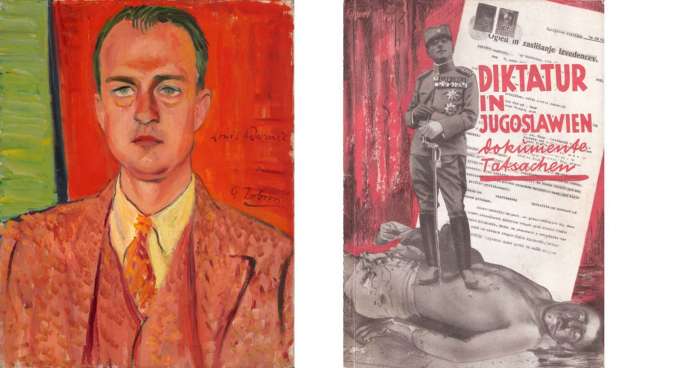STA, 25 April 2019 - Paintings, sculptures, prints, drawings, photographs and films created by more than 130 authors between 1929 and 1941 in the Kingdom of Yugoslavia will be displayed at the Moderna Galerija in Ljubljana until 15 September, 2019.
On the Brink: The Visual Arts in the Kingdom of Yugoslavia (1929-1941) provides an overview of the visual art from the start of the reign of King Alexander I on 6 January 1929 to the beginning of World War II in Yugoslavia in April 1941.
Divided into five sections, it deals with five topics through different works of art and presentations. The show, the gallery's most ambitious event this year, will be accompanied by more than 20 film screenings.
In the section exploring intimacy and the inner world, works by major Serbian and Slovenian painters are put on show, the second section is dedicated to landscapes.
The third section, focussing on contrasts, is the central part of the exhibition and features a painting by Serbian Petar Dobrović depicting journalists of the Danas magazine.
It also presents a clash on the left between Croatian writer Miroslav Krleža and Marko Ristić, a representative of Belgrade's surrealism.
The fourth section is dubbed People. According to curator Marko Jenko, this room is very chaotic, presenting people from cities and the countryside, mainly through reportage photography, which was very popular at the time.
The final part of the exhibition presents Yugoslavia's ties between the two world wars through the first two official presentations of the Kingdom of Yugoslavia at the Venice Biennale in 1938 and 1940.
According to Moderna Galerija director Zdenka Badovinac, the historical context of the period is presented through excerpts from a 1934 travelogue by Louis Adamič, The Native's Return.
Slovenian-US writer Adamič presented the complex situation in the kingdom at the time through his encounters with a variety of people, including Croatian sculptor Ivan Meštrović, Dobrović and Krleža.
He was also received by King Alexander I, one year before his assassination in Marseilles.
Adamič portrayed the Kingdom of Yugoslavia as a country on the brink, a country of stark contrasts, caught between old, premodern customs and the grip of capitalism, with a premonition of its imminent end in a broader European and global context, the museum of modern art says.
The exhibition is open until 15 September.







